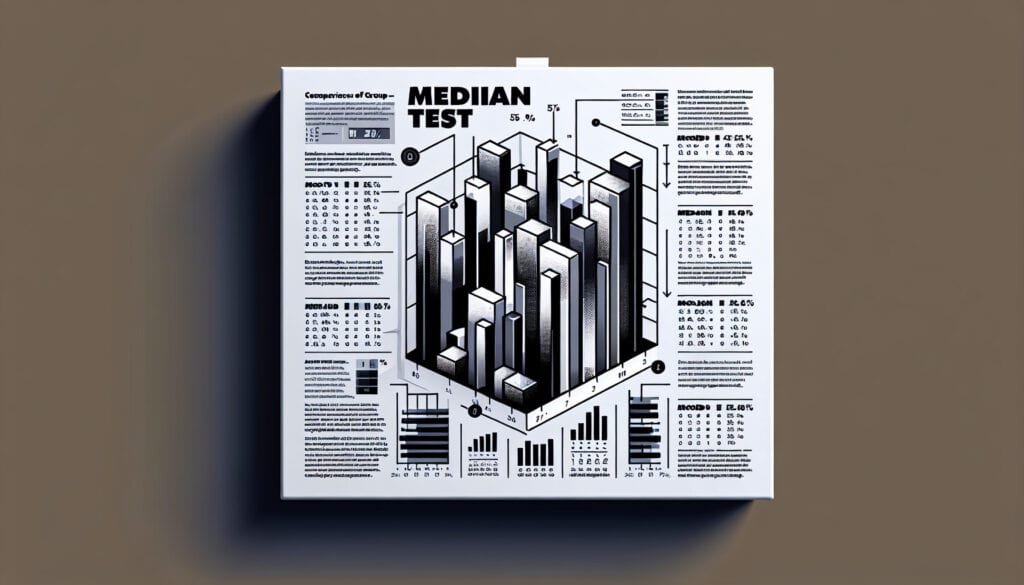Pour vérifier si deux groupes ou plus ont la même médiane.
- Méthodologies : Ergonomie
Test de la médiane de Mood

Test de la médiane de Mood
- Analyse de la variance (ANOVA), Amélioration continue, Contrôle non destructif (CND), Amélioration des processus, Optimisation des processus, Assurance qualité, Contrôle de qualité, Statistical Analysis, Tests statistiques
Objectif :
Comment il est utilisé :
- A non-parametric test statistique that is used to compare the medians of two or more independent groups. It is an alternative to the one-way ANOVA when the assumption of normality is not met.
Avantages
- Peut être utilisé avec des données non normales ; Robuste aux valeurs aberrantes.
Inconvénients
- Moins puissant que les tests paramétriques lorsque les données sont normalement distribuées ; ne teste que les différences au niveau de la médiane et non de la moyenne.
Catégories :
- Résolution de problèmes, Qualité
Idéal pour :
- Comparaison des médianes de deux groupes ou plus, par exemple les performances de deux processus de fabrication différents.
The Mood’s Median Test is particularly useful in fields such as product design and engineering, where determining the efficacy of varying approaches, materials, or processes is imperative; it can be effectively employed during the evaluation phase of design prototypes or testing phases of manufacturing methodologies. Industries such as pharmaceuticals, consumer goods, and automotive often rely on this test when assessing outcomes from different groups, such as testing the durability of a new composite material against an existing one or comparing consumer ratings for different product designs. It is designed to cater to situations where data distributions do not conform to normality, making it a valuable tool for teams analyzing production metrics or customer feedback that might present skewed distributions or contain significant outliers. Initiatives involving this methodology commonly include cross-functional teams that may consist of product designers, engineers, quality assurance specialists, and statisticians who collaborate to derive meaningful conclusions from the data gathered. Each group’s ability to interpret the results can lead to informed decision-making, ultimately impacting product refinement, optimizing processes, and aligning outcomes with consumer expectations. The robustness of the Mood’s Median Test serves to ensure that the conclusions drawn are reflective of actual differences in medians rather than anomalies caused by the data’s distribution or outliers, linking statistical analysis directly to real-world applications and improvements.
Principales étapes de cette méthodologie
- Rank all data from all groups together, assigning average ranks for tied values.
- Calculate the sum of ranks for each group.
- Determine the appropriate test statistic, which is the smaller of the sums of ranks.
- Identify the distribution of the test statistic under the null hypothesis.
- Calculate the p-value based on the test statistic and the null distribution.
- Compare the p-value to the significance level to make a decision regarding the null hypothesis.
Conseils de pro
- Validate the independence of your groups to ensure that the assumptions of the Mood's Median Test hold, as dependence can bias median comparisons.
- Consider bootstrapping techniques to enhance the robustness of your median estimates, especially in small sample sizes.
- Use graphical representations, such as boxplots, to accompany median test results for clearer communication of group differences and variability.
Lire et comparer plusieurs méthodologies, nous recommandons le
> Référentiel méthodologique étendu <
ainsi que plus de 400 autres méthodologies.
Vos commentaires sur cette méthodologie ou des informations supplémentaires sont les bienvenus sur le site web de la Commission européenne. section des commentaires ci-dessous ↓ , ainsi que toute idée ou lien en rapport avec l'ingénierie.
Articles Similaires
Méta-analyse
Cartographie des messages
Diagrammes du modèle mental
Forces de poussée et de traction maximales acceptables
Planification des besoins en matériaux (MRP)
Programme directeur de production (PDP)